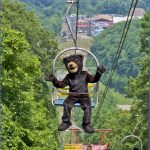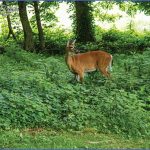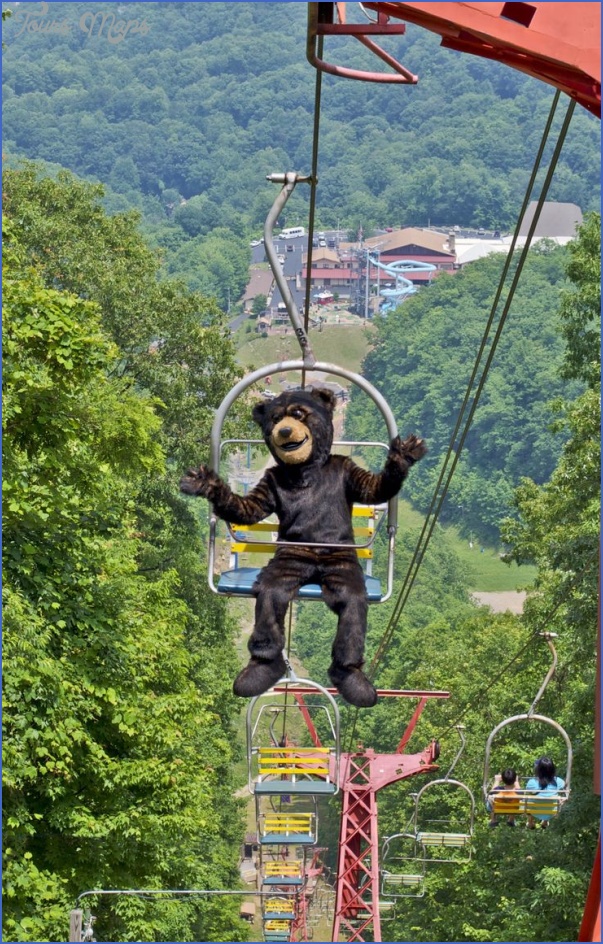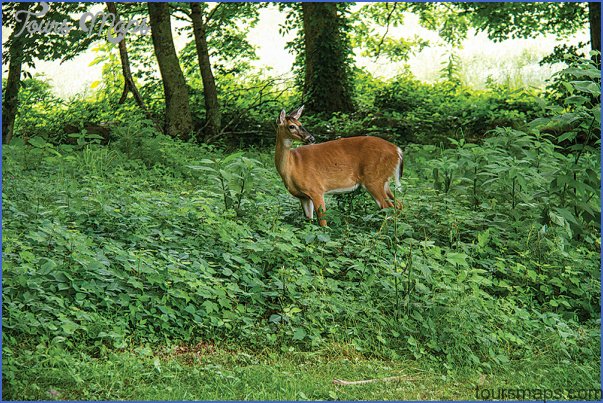BEFORE THE ARRIVAL OF THE WHITE MAN, when the Cherokees lived and hunted in the Smoky Mountains and fought only with neighboring tribes, the animals in this region were much different from today. Passenger pigeons darkened the skies in unfathomable numbers; wood bison and elk browsed in meadows and clearings; gray (and possibly red) wolves hunted for rodents and deer; peregrine falcons soared overhead; beavers dammed the creeks while otters played in them; fishers hunted for squirrels; mountain lions did whatever they wanted; and the smoky madtom, spotfin chub, duskytail darter, and yellowfin madtom (all species of fish) darted about in the streams.
The arrival of the white man signaled the end for many of these species. The bison were gone by 1765, the elk by the mid-i8oos, the gray wolf by 1887, and the mountain lion by the late 1800s. Martha, the last passenger pigeon remaining on
Earth, died in captivity at the Cincinnati Zoo in 1914. At one time or another, all the species mentioned above had been extirpated from the Smokies every one of them at the hand of man.
In keeping with the National Park Service’s mission to conserve the scenery and the natural and historic objects and the wildlife therein, Great Smoky Mountains National Park has initiated a number of efforts to reintroduce some of these species. Of course, we will never see another passenger pigeon, and it is highly doubtful that locals today will tolerate a mountain lion in their neighborhood. But river otters once again play in some of the larger streams; peregrines soar over Alum Cave Bluff; and the smoky madtom, spotfin chub, duskytail darter, and yellowfin madtom ply the waters of Abrams Creek.
In the early 1990s, biologists reintroduced the red wolf to the Cades Cove section of the park. Unfortunately, the experimental release proved unsuccessful. Everyone liked the idea of having the wolves in the park, but the wolves themselves had other plans. They kept leaving the park boundary and getting into trouble, so the plan had to be squelched.
Perhaps the most popular reintroduction effort is that of the elk. In 2001, biologists released twenty-five elk in Cataloochee Cove. Another twenty-seven were released the following year. The herd now numbers about seventy-five and seems to be doing well. The number of visitors to Cataloochee Cove has increased dramatically since the elk were released. The cove becomes especially crowded in the fall, when the bulls make their majestic bugling calls.
The historic Little Cataloochee Baptist Church in Great Smoky Mountains National Park still holds services on special occasions.
Mount Sterling community marks the entrance to the park’s Big Creek section. Here you’ll find a picnic area and seasonal campground. But the best part about Big Creek are the hiking trails. Three trails start here, and combined with connecting trails, they make up several miles of fine backcountry hiking. Several options are available for hiking to the summit of Mount Sterling.
A good option for a family hike is Big Creek Trail. It follows the cascading stream for five miles along an abandoned railroad grade to Walnut Bottom, the site of an old logging camp. The train transported logs from deep within the Big Creek watershed to a mill that stood about where the trailhead parking area is today. Look around; you might spot the crumbling remains of the mill’s foundation. In the woods behind the restroom building is the site of CCC camp NP-7. Between 1933 and 1939, the CCC boys of NP-7 built miles of hiking trails and constructed the fire tower atop Mount Sterling and the lookout building on Mount Cammerer.
This Civilian Conservation Corps facility operated in the Big Creek section of Great Smoky Mountains National Park. Hunter Library, Western Carolina University
BRINGING NEW LIFE TO THE SMOKIES Photo Gallery
Maybe You Like Them Too
- The Best Cities To Visit in The World
- World’s 10 Best Places To Visit
- Coolest Countries in the World to Visit
- Travel to Santorini, Greece
- Map of Barbados – Holiday in Barbados








